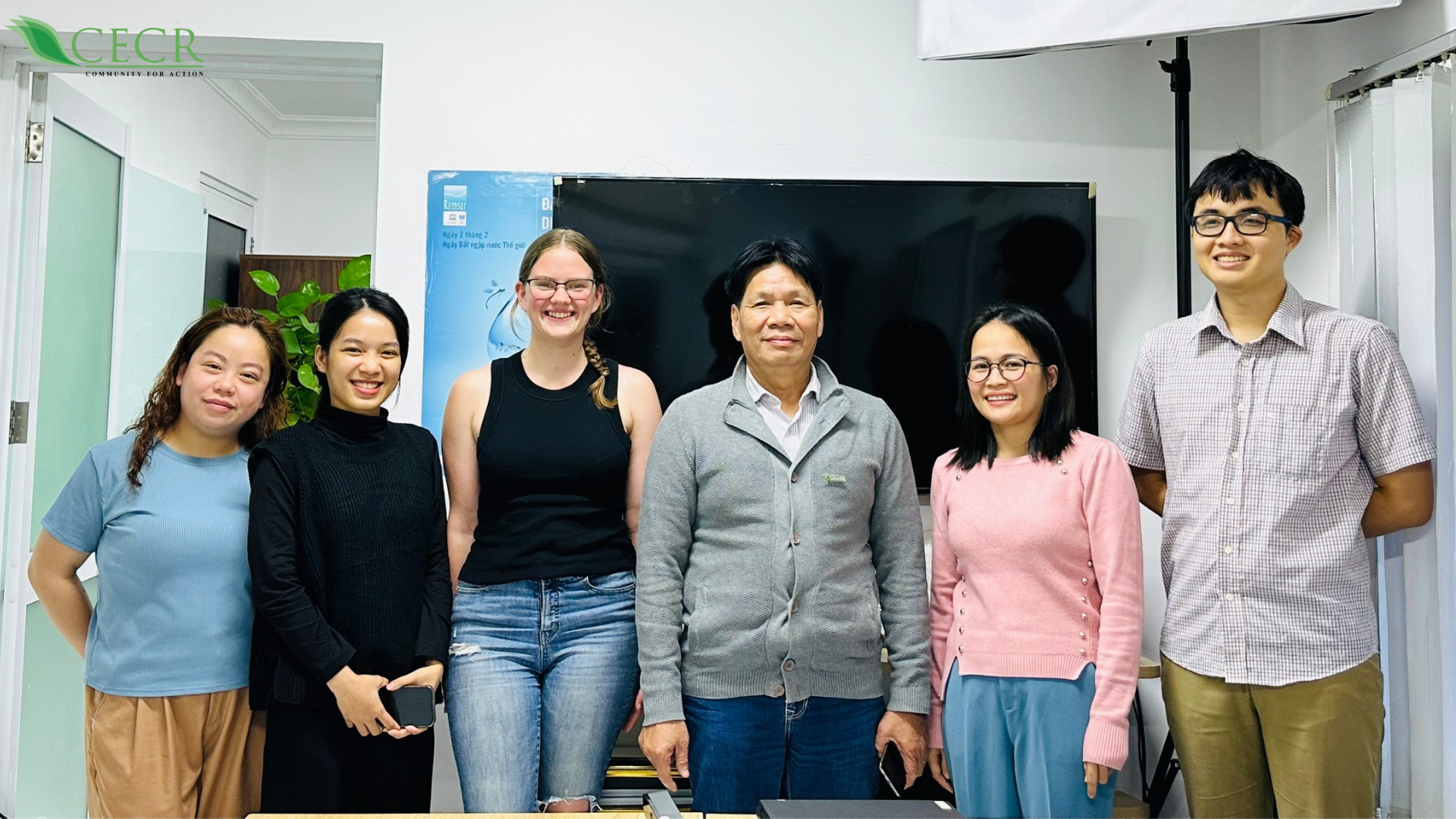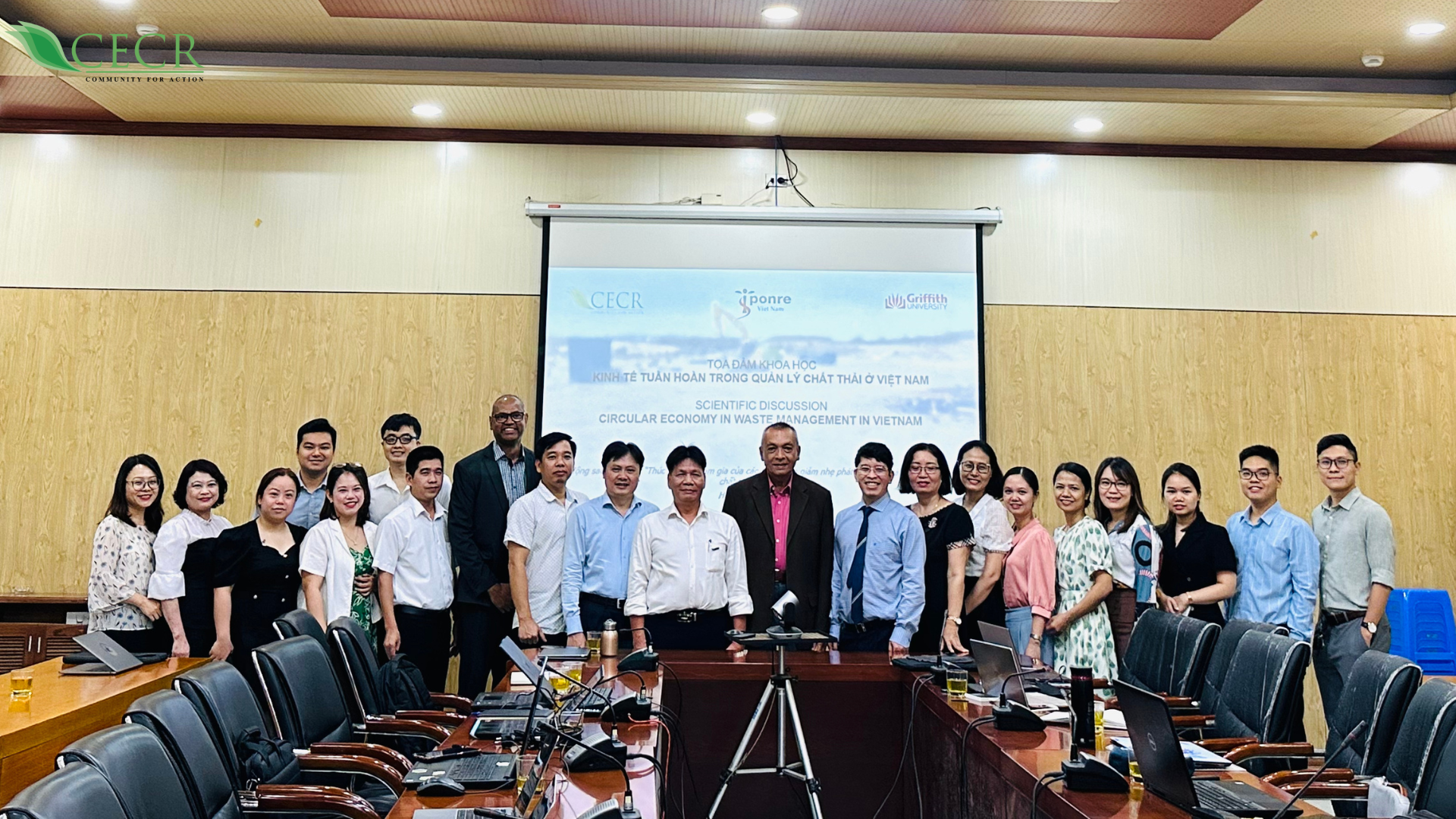On July 5, the Center for Environmental Economics has organized the training session: “Building a basin-based water resource management and conservation model for the people in Dy village, Minh Quang commune, Ba Vi district”. The activity is within the “Building a basin-based water resource management and conservation model, experimental application for Ba Vi National Park area” initiative of the “Collective actions for water conservation” project funded by the United States Agency for International Development in Vietnam and implemented by the Center for Environment and Community Research (CECR).
Attending the training were Assoc. Prof. Dr. Truong Manh Tien – Member of the Presidium of the Vietnam Union of Science and Technology Associations, Chairman of the Vietnam Water Conservation Network; Assoc. Prof. Dr. Luu Duc Hai – Director of Center for Environmental Economics; MSc Pham Thi Mai – Deputy Director of Center for Environmental Economics; Representative of the Center for Environment and Community Research.
As the local government representative, Mr. Nguyen Manh Thuoc – Vice Chairman of the People’s Committee of Minh Quang commune as well as the chief and the people of Dy village also attended the training.

An overview of the training session “Building a basin-based water resource management and conservation model for the people in Dy village”
Delivering the opening speech, Assoc. Prof. Dr. Luu Duc Hai has given an overview on “The community model for water resource management and conservation in Ba Vi National Park – Pilot in Dy village, Minh Quang commune”.
According to Assoc. Prof. Dr. Luu Duc Hai, the key to building a community model for water resource management and conservation at Dy village is to introduce a village convention that regulates all activities of the residential community in Dy village and to use it as the basis to prevent people from carrying out harmful activities to the water source.

Assoc. Prof. Dr. Luu Duc Hai – Director of the Center for Environmental Economics – delivering the opening speech.
Some activities of this project include:
- Investing in biogas systems for five households living near the streams with economic difficulties for the pilot treatment of livestock and domestic wastewater, which serves as a model for other households with better economic conditions.
- Pilot investing in trash cans and at-source waste segregation guidance for people to thoroughly prevent waste discharge into streams causing water pollution and create a movement to collect and separate waste in the community.
- Establishing regulations on embankment and flow correction activities that cause loss of water sources or obstruction of water drainage in the rainy season (based on Hanoi regulations on canal management).

Assoc. Prof. Dr. Truong Manh Tien – Member of the Presidium of the Vietnam Union of Science and Technology Associations, Chairman of the Vietnam Water Conservation Network
As stated by Assoc. Prof. Dr. Luu Duc Hai, the biggest success of the project is encouraging the people of Dy village to agree on a convention to manage and protect water sources. The village convention includes 12 articles focusing on the standard behaviors for households and individuals of Dy village to conserve local water resources and environmental sanitary.
During the training, Assoc. Prof. Dr. Truong Manh Tien also shared his enthusiasm about the importance of water conservation to the daily life of the people and households as well as the local community.
Assoc.Prof.Dr. Truong Manh Tien highly appreciated this convention on the management and conservation of water resources of the people of Dy village. He also took the time to explain and analyze the contents of the 12 articles in the village convention.

Commemorative photo with the people of Dy village
After listening to the detailed presentation, the people of Dy village have shown their determination to comply with the convention on water resource management and conservation, turning it into practical actions.
After the training, experts also visited selected households with the biogas system to pilot the treatment of livestock and domestic wastewater. Mr. Dinh Thanh Huong expressed excitement at the arrival of experts to the community to study the current situation and develop plans to help local people manage and protect their water sources.
“Ever since the project invested us with this biogas system to treat livestock and domestic wastewater, I feel that the air has become fresher and we don’t have to live with the horrible smell from the stable anymore. Plus, we also have more gas for cooking without any extra cost. And we feel even happier and more excited seeing the stream becoming cleaner every day, some fish even start coming back again.”

Experts and village leaders visiting the livestock and domestic wastewater treatment model using the biogas cellar system
To the reporters from the Electronic Journal of Environmental Economics, Mr. Nguyen Manh Thuoc – Vice Chairman of Quang Minh Commune People’s Committee said: “For a long time, local authorities have been aware of the importance of environmental protection to people’s lives. The locality has successfully built several environmental protection models in residential clusters in the commune, but there are still a few limitations and shortcomings.”
For Dy village, the establishment of the village convention on management and conservation of water resources is a major success. To put the convention into practice, the local government will encourage households that have been illegally using and encroaching on the stream bank protection corridor to voluntarily take down the embankment construction. It shall be done by force if necessary if households do not take down the encroaching embankment construction voluntarily.

A corner of Dy village.
According to Mr. Thuoc, in the future, the Commune People’s Committee will request village authorities to adjust the village convention, integrating water resource management and conservation, along with environmental protection into the convention to raise local people’s awareness of environmental protection in general and water resource conservation in particular.
Dy village is a part of Minh Quang commune, located to the East of Ba Vi mountain range and about 1km away from Da Chong. The village has 200 households with a population of nearly 1000 people, of which 80% are Muong people, and the rest are Kinh and Dao people.
People of the village are mainly engaged in agricultural production with three main crops: maize, rice, and tea as well as some traditional livestock such as pigs and chickens, providing a stable source of income. Therefore, water has always been a valuable resource for the people of Dy village.
The irrigation system for agricultural production of the village depends mostly on two streams flowing from Ba Vi National Park to provide water for crops and then flowing out through the drainage system to the area of Ba Trai commune. A great deterioration in water quality between the upstream and downstream of Dy village was recorded.
The factors affecting the water source flowing through Dy village include the blockage of water intake for individual households who are raising fish and livestock which leads to a decrease in water flow; the discharge of untreated wastewater and garbage into streams causing pollution; embankment constructions that encroach on the flow, obstructing drainage in the rainy season.
Journal of Environmental Economics
Hà Nam – Linh Chi


 Tiếng Việt
Tiếng Việt

